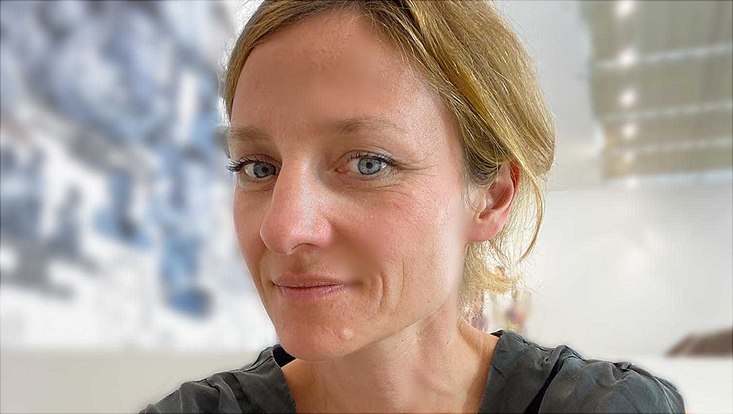Claudia Jentzsch, M.A.
Curriculum
Claudia Jentzsch studied art history and communication and media studies in Leipzig and Florence with a focus on Italian art history of the early modern period. She worked in the field of communication for documenta 12 (Kassel) and Berlin Biennale. Her Phd thesis Ordnung und Gemeinschaft. Die Ästhetik der Florentiner Augustinereremitenkirche Santo Spirito at the Berlin University of the Arts (Universität der Künste Berlin, UDK) was supported by a Elsa-Neumann-Scholarship (Nafög) as well as by the DAAD, the Kunsthistorisches Institut in Florenz – MPI and the Bibliotheca Hertziana – MPI for Art History in Rome. In a series of teaching assignments and workshops at the UDK Berlin, she dealt with, among other things, art as political practice and speaking about art, i.e. the mediation of contemporary art and museum collections.
Research interests: premodern visual and material culture, art and architecture of the mendicant orders, cultures of knowledge of the Italian humanism, memorial culture, image-script-language; theories and methods of art education and mediation in the context of decolonial discourses and the restitution debate.
Current projects: Editing (together with Katharine Stahlbuhk) the volume ‘Mendicants, Humanists and the Aesthetics of the civitas. Debates and political culture in the 14th and 15th centuries and their impact on art, architecture and urban space.’ (to be published in 2023 in the online journal RIHA). An interdisciplinary network (with Philippa Sissis and Katharine Stahlbuhk) is also being established to research the visual and material culture of humanism in relation to language and images.
Publications (selection)
- Publication of the conference proceedings (together with Katharine Stahlbuhk): Mendicants, Humanists and the Aesthetics of the civitas. Debates and political culture in the 14th and 15th centuries and their impact on art, architecture and urban space, [Conference Bibliotheca Hertziana – Max-Planck-Institut für Kunstgeschichte, October 05–06, 2021], Special Issue, Online-Journal RIHA. 2023).
- ‚OB SINGVLAREM ELOQVENTIAM ET DOCTRINAM‘: The funerary inscription of Luigi Marsili‘s cenotaph in the Florentine Cathedral, in: Brandis, Veronika; Seidel, Robert; De Jong, Jan (eds.): Funerary Inscriptions in Early Modern Europe, [Conference Goethe Universität Frankfurt, September 01–02, 2022). (Brill, volume of the series Intersections. Interdisciplinary Studies in Early Modern Culture] Leiden 2023.
- Sepoltura come è solito? Die Grablegen in Santo Spirito im Kontext von Regulierungen der Florentiner Begräbniskultur und vormodernen Raumordnungen, in: Giese, Francine; Thome, Markus; Pawlak, Anna (eds.): Grab, Erinnerung, Raum. Repräsentationskonzepte in der christlichen und islamischen Kunst der Vormoderne/ Tomb, Memory, Space. Concepts of Representation in Premodern Christian and Islamic Art. Berlin 2018.
- Partizipation am Bau der Augustinerkirche Santo Spirito in Florenz, in: Klein, Bruno; Schröck, Katja (eds.): Die Kirche als Baustelle – Große Sakralbauten des Mittelalters. Köln 2013.
- Florentiner Quartieri und Gonfaloni im Quattrocento – Das Viertel Santo Spirito und seine Hauptkirche, in: Michalsky, Tanja; Heidemann, Grit (eds.): Quartieri, sestieri, seggi. Die Ordnung des sozialen Raumes in den frühneuzeitlichen Städten Italiens. Berlin 2012.
Research project: vis dicendi - Sprachkraft (power of language) - Bildkraft (power of images). (Rhetorical) images and figures of speech in humanistic texts and in the arts of the Italian Quattrocento
The project focuses on the Sprachkraft (power of language), which has ‘Bildkraft’ (power of images). The imaginative and evocative potential of language is revealed in the juxtaposition of the power of language and the power of imagery. The project looks at the power of images from two perspectives: On the one hand, it examines ‘figures of speech’ in texts that evoke ‘images’ in the minds of recipients by means of the imagination (imaginations, vis imaginativa), e.g. through the use of metaphors, analogies and image-generating language use. On the other hand, it explores examples from the visual arts in which the focus is on the pictorial and sensual quality of language. It is thus about inner and outer images. What they have in common is their immanent (politically motivated) rhetoric, which expresses the desire to convince the counterpart with aesthetic means.
During the work at the CAS, the project is dedicated to a work from the visual arts and a humanist treatise: the marble fictitious tomb monument of the Augustinian Hermit Luigi Marsili in the Florentine Cathedral from 1439, executed as a wall painting, is the starting point for the question of how the power of language, vis dicendi, can be represented in art. The focus is also on texts by the humanist Giannozzo Manetti, which work in particular with body metaphors and analogies to sacred buildings. His architectural ekphrases are analysed in conjunction with the conceptions of the forces of the soul outlined in Manetti's treatise De dignitate et excellentia hominis (1452), which include architecture, painting and sculpture, and his remarks on the creative force.

